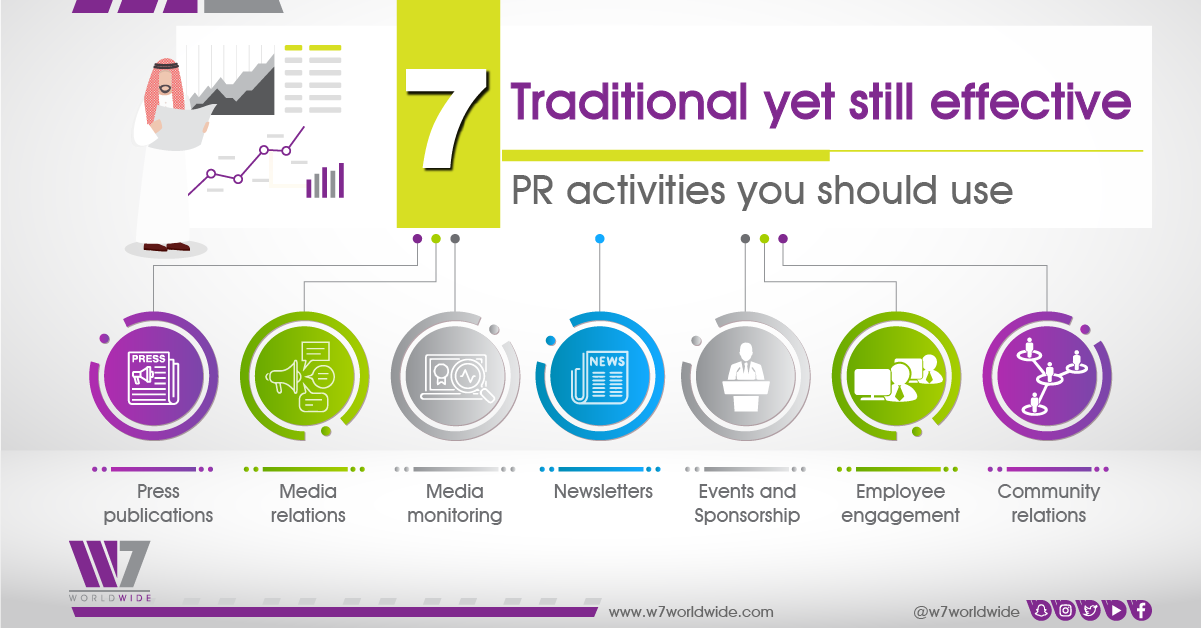The transformation of public relations in the past few years has been in line with evolving technology and the changing demographics of the target audience. Many PR pundits have declared that traditional PR isn’t doing it for them anymore – and they are not entirely wrong. However, one should not be in a hurry to completely dismiss traditional PR. These time-tested tactics – if rightly incorporated with digital PR – have still got what it takes to help you get the most bang for your buck.
Let’s look at the difference between traditional and digital PR first. Traditional PR focuses on channels such as the press, TV and radio, whereas digital PR targets online publications such as, websites, social media platforms, blogs, influencer campaigns, online news and video portals. The aim of both approaches is the same – to increase the brand’s visibility while promoting positive customer engagement. As we shall see below, there is a certain degree of overlap between traditional and digital public relations. Following are traditional PR activities and tactics that we believe will always be evergreen and will supplement any online PR strategy:
1. Press publications: Media gurus have been writing obituaries of the print i.e. newspapers and magazines, since over 25 years now. While a good number of publications have indeed closed shop and some have exclusively embraced the digital medium, the truth is big newspapers and magazines continue to retain their place and influence in the market. Many advertisers still prefer the print medium and as long as they continue the support, print publications are not going anywhere. So publishing a profile of your business in a leading magazine or a press release about the launch of a new product in the local newspaper isn’t a bad idea.
2. Media relations: Managing good ties with journalists, editors, writers, etc. is key to how your business will be portrayed in the media. The aim should be to build long-term, meaningful relations with those in the local and regional media, who you can pitch press releases and story ideas to, and who can help you manage crises. With digital PR, new-age media forces such as influencers and bloggers are also to be added to your media contacts list.
3. Media monitoring: As with traditional media, where one keeps a tab on what the press is saying about your brand, PR professionals should closely monitor what’s being said about you and who’s saying it online. Analyzing this data is important to protect your company from any threats and helps to further improve your reputation. The good thing is monitoring digital PR is way easier than in the case of traditional PR, thanks to certain online tools and indicators such as Google Analytics, hits, trends, etc.
4. Newsletters: Monthly, bi-annual or annual newsletters are a great way to keep your customers in the loop of new product launches, new stores, services, discounts, and simply keeping in touch with them. Nevertheless, email newsletters have replaced the printed ones, showing yet again the successful incorporation of a traditional approach within digital PR.
5. Events and Sponsorship: Events such as press conferences, roundtables, seminars, forums and trade shows are instrumental in gaining exposure for your brand, promoting a new product and interacting with customers. Companies can send their top executives as speakers on panels in these events, where they can increase customer confidence as well as make new customers. Sponsorship of these events, another traditional PR practice, is beneficial for the business. Companies can sponsor events by paying in cash or providing for free some of their products to the attendees. This would be in return for a presentation slot, business logo on invitation cards or banners and media exposure – all of which are good for the brand’s visibility.
6. Employee engagement: An employee is the most constant public face of a brand. They represent your brand to the outside world, thereby acting as the most understated brand ambassadors of your company. This is why maintaining good employee relations is a part of corporate communications, which can help ensure that the employees are representing your business in a manner that is in line with the company’s goals.
7. Community relations: More and more companies are learning the importance of giving back to the community they operate in. This is done through the company’s corporate social responsibility (CSR) strategy, under which the business throws it weight behind causes such as philanthropy, environmental sustainability, humanitarian work, etc. Needless to say, any company’s commitment toward its community helps increase feelings of goodwill towards the brand and cements customer loyalty.


